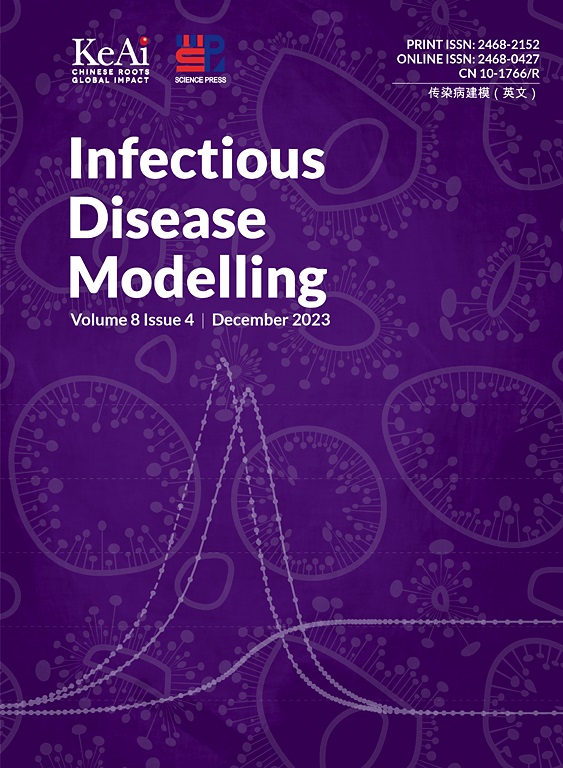COVID-19 dynamic modeling of immune variability and multistage vaccination strategies: A case study in Malaysia
IF 2.5
3区 医学
Q1 Medicine
引用次数: 0
Abstract
Hybrid-immune and immunodeficient individuals have been identified by the World Health Organization as two vulnerable groups in the context of COVID-19, but their distinct characteristics remain underexplored. To address this gap, we developed an extended SIVS compartmental model that simulates the spread of COVID-19 and the impact of administering three doses of the vaccine (first, second, and booster). This study aims to provide insights into how these vulnerable populations respond to vaccination and the dynamics of waning immunity. Using real-time data from the Ministry of Health of Malaysia (May 2023–April 2024), we estimated key parameters through numerical methods and fitted the model to the data using MATLAB's lsqcurvefit package. We carried out stability and equilibrium analyses, computed the basic reproduction number (R0), and identified conditions for Hopf bifurcation. Sensitivity analysis highlights the parameters with the greatest impact on infection dynamics. The calculated basic reproduction number and stability results suggest that with current vaccination rates, COVID-19 will persist in the population over an extended period. Our findings provide valuable information for public health agencies, offering recommendations for vaccination strategies targeting hybrid-immune and immunodeficient groups. These insights can inform decisions about vaccine booster schedules and resource allocation to better manage the pandemic.



COVID-19免疫变异性动态建模和多阶段疫苗接种策略:马来西亚案例研究
世界卫生组织已将混合免疫人群和免疫缺陷人群确定为 COVID-19 的两个易感人群,但对他们的不同特征仍未进行充分的研究。为了填补这一空白,我们开发了一个扩展的 SIVS 分区模型,该模型模拟了 COVID-19 的传播以及接种三剂疫苗(第一剂、第二剂和加强剂)的影响。这项研究旨在深入了解这些易感人群对疫苗接种的反应以及免疫力下降的动态变化。利用马来西亚卫生部提供的实时数据(2023 年 5 月至 2024 年 4 月),我们通过数值方法估算了关键参数,并使用 MATLAB 的 lsqcurvefit 软件包将模型与数据拟合。我们进行了稳定性和平衡分析,计算了基本繁殖数(R 0),并确定了霍普夫分岔的条件。敏感性分析突出了对感染动态影响最大的参数。计算得出的基本繁殖数和稳定性结果表明,在目前的疫苗接种率下,COVID-19 将在人群中长期存在。我们的研究结果为公共卫生机构提供了宝贵的信息,为针对混合免疫群体和免疫缺陷群体的疫苗接种策略提供了建议。这些见解可以为疫苗加强接种计划和资源分配提供决策依据,从而更好地管理大流行病。
本文章由计算机程序翻译,如有差异,请以英文原文为准。
求助全文
约1分钟内获得全文
求助全文
来源期刊

Infectious Disease Modelling
Mathematics-Applied Mathematics
CiteScore
17.00
自引率
3.40%
发文量
73
审稿时长
17 weeks
期刊介绍:
Infectious Disease Modelling is an open access journal that undergoes peer-review. Its main objective is to facilitate research that combines mathematical modelling, retrieval and analysis of infection disease data, and public health decision support. The journal actively encourages original research that improves this interface, as well as review articles that highlight innovative methodologies relevant to data collection, informatics, and policy making in the field of public health.
 求助内容:
求助内容: 应助结果提醒方式:
应助结果提醒方式:


